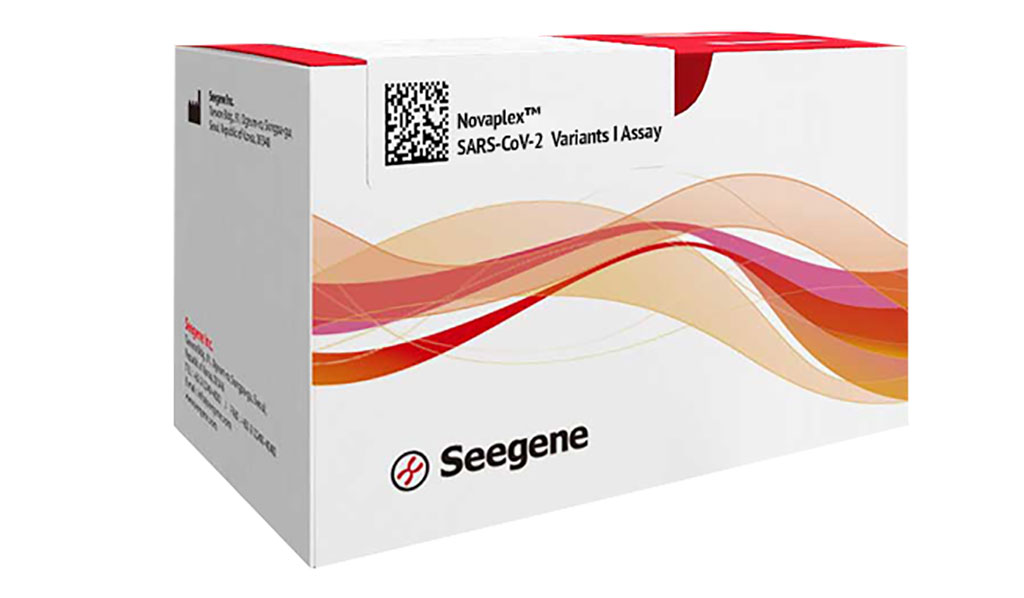Easier, Faster Assay Enables Many More Laboratories to Identify COVID-19 Variants
Posted on 04 Apr 2022
Using a commercially available test and simplified process, any laboratory that can run a real-time PCR assay can detect known SARS-CoV-2 variants in patient samples, according to a new study.
The study by investigators at the University of Texas Medical Branch (Galveston, TX, USA) found that Seegene, Inc.’s (Seoul, Korea) Novaplex SARS-CoV-2 Variant I, II, and IV real-time PCR assays can reliably detect SARS-CoV-2 in patient samples and identify known variants of interest and concern. Results from the PCR assays were comparable to those from the “gold standard” spike gene Sanger sequencing method. Researchers were also able to successfully streamline testing and reduce cost and turnaround time by processing samples without extracting RNA for testing.

The I, II, and IV assays from Seegene are designed to detect genetic mutations associated with the alpha, beta, delta, and epsilon variants of SARS-CoV-2. At the time of the study, the omicron variant had not yet emerged. RNA was extracted from each sample for testing by the Novaplex RT-PCR assays and Sanger sequencing. The samples were also directly tested without extraction of RNA by the Novaplex assays. Of the 156 samples processed with RNA extraction, the RT-PCR assays identified 109 variants. The results were 100% in agreement with the Sanger sequencing test. The RNA extraction-free method was 91.7% as sensitive as the traditional RNA extraction method. In samples with a lower viral load, the extraction-free RT-PCR assays did not detect some mutations, presumably because of lower nucleic acid concentrations in the original samples.
RT-PCR assays can be tailored to include additional representative genes as different variants emerge and allow for more accessible variant detection and monitoring to inform public health and treatment decisions. While not included in this study, assays are now available to identify omicron-specific mutations.
“Real-time PCR (RT-PCR) methodology for variant detection is accessible, rapid, simpler, and accurate compared to traditional sequencing,” said lead investigator Ping Ren, PhD, Department of Pathology, University of Texas Medical Branch. “Combining an extraction-free processing method with RT-PCR technology can help laboratories without sequencing capabilities track circulating variants and investigate variant-dependent effects on treatment efficacy and disease severity.”
“Determining the SARS-CoV-2 variant in individual patient samples can help guide treatment since some variants are more resistant to current treatment regimens,” Dr. Ren observed. “However, the potential impact extends beyond individual patients and into the public health realm. It is important to track variant spread as part of public health surveillance because of variant-dependent transmission, disease severity, and treatment decisions.
“A major limiting factor for molecular SARS-CoV-2 assays is the shortage of RNA extraction reagents,” explained co-lead author Marisa C. Nielsen, PhD, Department of Pathology, The University of Texas Medical Branch. “Conventional extraction remains a time-consuming aspect of molecular diagnosis of SARS-CoV-2. Recent CDC guidance recommends sequencing only for cases with a cycle threshold (Ct) value lower than 28, which indicates a higher viral load, because sequencing is less reliable in samples with lower viral loads.”
“Although lower sensitivity was observed with the extraction-free method, it still represents a viable alternative,” Dr. Nielsen added. “Spike sequencing is still necessary for detecting new variants.”
Related Links:
Seegene, Inc.
University of Texas Medical Branch













